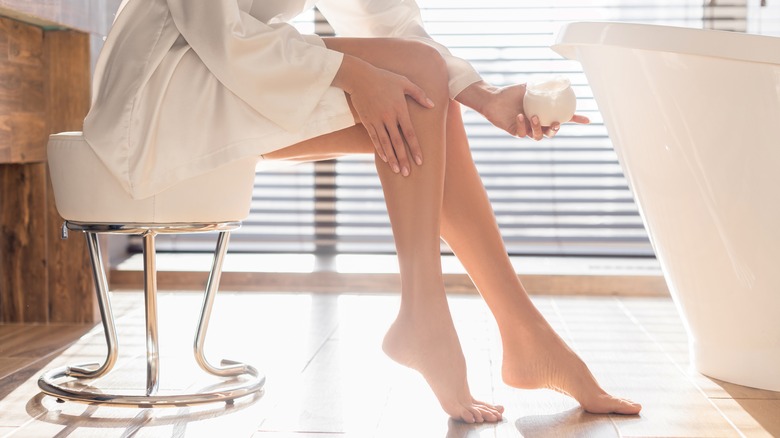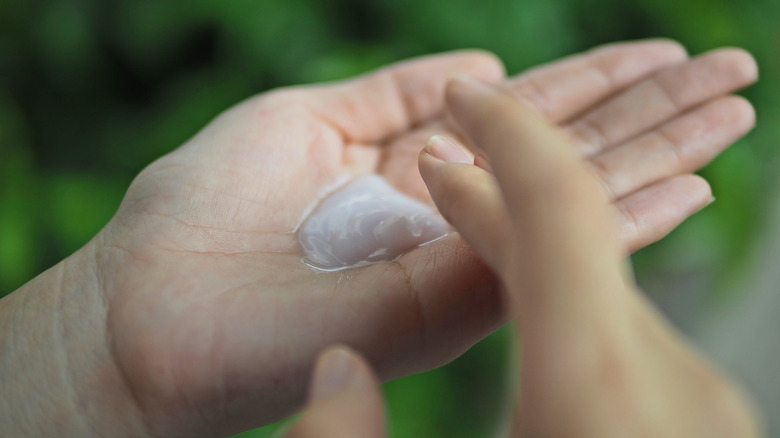Does Cellulite Cream Really Work?
Anyone can have cellulite but the plain truth is that it is much more prevalent in women than men. Since it often begins after puberty, hormones are thought to play a role in the development of the dimpled skin that results from pockets of fat being pushed through connective tissue (via the Mayo Clinic).
Cellulite is typically found on the hips, thighs, and buttocks. And, according to Healthline, it can be caused by hormones, poor diet, toxins, genetics, weight gain, inactivity, and pregnancy, to name just a few. However, more often than not, cellulite just appears out of the blue and, annoyingly, for no reason at all.
Though most of us can find a bit of cellulite somewhere if we look hard enough, it's something that many people want to get rid of as soon as possible. Some even go to extreme lengths and pay exorbitant amounts to have liposuction, which surgically removes the fat deposits that cause it. Although most will try a more hands-on approach with store-bought cream, not everybody is convinced that it works.
Some doctors claim cellulite creams don't work
Dr. Garry S. Brody, a professor of plastic surgery at the University of Southern California, reasons that cellulite is just a fact of life and there is not much that can be done to get rid of it. As Dr. Brody explained to Medical News Today, "So-called cellulite is the natural anatomic contour characteristic of many women's thighs and buttocks."
He continued, "It is unrelated to weight gain or loss. There is absolutely no surgical or medical solution to women's dislike of this appearance except for the psychological self-deception of wanting to believe the ads." Dr. Ron Shelton, of the New York Aesthetic Center, agreed, noting, "I have never read a convincing research article that explains how anti-cellulite creams work."
He also pointed out, "We do know that they do not create long-lasting effects. The topical therapy must be continued to maintain the results." Still, there are some who believe that creams do show an improvement, even if it's temporary.
What these creams can actually do for cellulite
According to the American Academy of Dermatology Association, certain cellulite creams do, in fact, help to change the appearance of it on the skin, if minimally. A cream that contains either caffeine or at least 0.3% retinol, for instance, will offer some temporary results. Caffeine works by dehydrating the skin's cells which makes cellulite less noticeable, while retinol helps the skin thicken — but it takes at least six months. When the skin is thicker, less cellulite shows.
For creams to be most effective, you have to apply them daily. One thing to look out for is whether the product contains aminophylline. Though aminophylline is an FDA-approved medication used to treat asthma, it is often found in cellulite creams (via FDA). However, it may cause an allergic reaction in some people and result in a racing heart or anxiety. It is always best to check in with your doctor first and then remember to do a spot test before starting any new cream.


